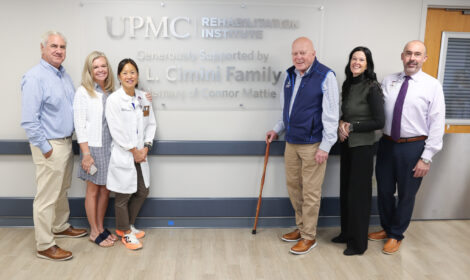Screening vs. diagnostic mammogram: What’s the difference?
Early detection is the most effective weapon against breast cancer. It’s a fact that regular mammograms save thousands of lives every year — and could save yours, too.
A mammogram is a low-dose X-ray exam that can spot any abnormal changes in your breast tissue that can’t be felt during a breast exam.
Mammograms help detect and diagnose breast cancer and benign (non-cancerous) conditions of the breast that could be causing a lump, skin changes or other abnormalities. And when breast cancer is caught in its earliest, localized stages, the 5-year survival rate is 99%.
While you may already know that you should start getting annual mammograms at age 40 — or earlier if you have risk factors — you may not know there are two types of mammograms: screening and diagnostic mammogram. They both use the same specialized X-ray machine, but the tests are very different. Learn the difference so you can take proactive steps toward maintaining optimal breast health.
What’s a
screening
mammogram?
Screening mammograms are performed yearly to check for signs of breast cancer. Screening mammograms are done on women who show no breast cancer symptoms, such as a lump, skin dimpling, nipple discharge or a change in size or shape since their last breast exam.
The goal of a screening mammogram is to detect signs of breast cancer as early as possible, before there are any outward signs. Some types of breast cancer can grow and spread quickly. So when breast cancer is found early on — when it’s small — it improves the chances of successful treatment.
During a screening mammogram, a specially trained and certified technologist positions your breast between two plates that compress the tissue evenly to acquire clear images. Typically, two images of each breast are taken from different angles, but depending on breast size, a few additional images might be needed to include all the tissue. The exam usually takes between 15 and 20 minutes.
Then, a diagnostic radiologist reviews the images for any abnormalities and sends a report to your doctor. In about a week, you’ll receive a letter telling you one of two things: that your mammogram was normal or that something was seen and you’ll need further evaluation.
What’s a
diagnostic
mammogram?
A diagnostic mammogram is just that. It’s used to help diagnose the source of symptoms or reasons for an abnormal finding on a screening mammogram.
A diagnostic mammogram is also done for women who have previously been treated for breast cancer, especially during the first five years after treatment.
During a diagnostic mammogram, the technologist takes images as directed by the radiologist to evaluate the finding on your screening mammogram or the symptoms you’re having. It’s a more in-depth evaluation that includes additional views of a specific area and sometimes advanced imaging.
In some cases, a breast ultrasound must be done at that time as well to get a closer look at a certain area.
Diagnostic mammograms can take longer because they’re more comprehensive, but you can expect to get your results during your visit. You may hear:
— There is no cause for concern, and you can return to having regular screening mammograms.
— It’s most likely nothing to worry about, but you should have another mammogram within six months to make sure there are no changes.
— It may be breast cancer and a biopsy is needed to know for sure.
If you’re called in for a diagnostic mammogram, know that it doesn’t always mean cancer. It just means we want to look at an area more closely. And in most cases, your results will come back negative for breast cancer.
Importance of breast cancer screening and early detection
The recommended age to begin yearly mammograms is 40. However, if you have a family history or other risk factors of breast cancer, talk to your doctor to determine if earlier breast cancer screening is right for you.
In addition to regular clinical breast exams, getting a yearly mammogram is the best way to take charge of your breast health.
If you notice any changes in your breasts or develop symptoms, talk to your doctor right away — even if you recently had a clear screening mammogram. The earlier doctors can catch any sign of cancer, the more effectively they can treat it — sometimes with less invasive options.
For the latest health and wellness tips and advice, visit geisinger.org/balance.
— — — —
Dr. Anne Dunne is a board-certified and fellowship-trained radiologist. She earned her medical degree from Georgetown University Medical School and completed her residency and a fellowship at the same institution. Dr. Dunne is certified in diagnostic radiology by the American Board of Radiology.



